Charlotte Street, South Bronx, NY August 1980
Collaborations, Don Leicht, Political Art, Stencils, Urban DecayThe Charlotte Street Stencils were painted during the last week of July and the first week of August 1980. John Fekner stencils Broken Promises, Falsas Promesas, Decay, Broken Treaties, Last Hope and Save Our School on the walls and buildings of Charlotte Street in the South Bronx. The message of Fekner’s stencils focus on pointing out the deteriorating conditions and issues that have plagued the community since the 1960s. Fekner’s purpose is to call attention to inadequate housing, poor services and the deplorable social problems afflicting the neighborhood residents for the past two decades.
Fekner’s agitprop stencils reflect the issues and opinions of the diverse grassroots coalitions participating in the People’s Convention (August 8-10th), an alternative gathering to the Democratic Convention being held at Madison Square Garden in New York City (August 11-14th). Dissatisfied with both the Democratic and Republican business policies and urban renewal development, the organizers and activists of the People’s Convention sought to build a dialogue of unity by addressing the unemployment of the local community, as well as broader social issues of freedom and equality, alternative energy/anti-nuclear, lesbian/ gay rights and farm labor.
Fekner’s friend and collaborator Don Leicht, an artist and teacher at P.S. 161, installs multiple Birdfeeders in the rubble and brick-filled lots facing the stencils. Their work transversely complements each other with two different and distinct approaches; Fekner’s stenciled messages are succinct and dramatic in size; Leicht’s Birdfeeders are small-scaled and intimate painted sculptures for the children of the neighborhood.
Not all of the buildings were abandoned on Charlotte Street. Fekner and Leicht paint Last Hope on the roofline of 1500 Boston Road where families were living. Years later, through the combined efforts of Alice Myers, Helen Steiner and Mary Jones, the building was finally purchased by the residents, renovated and renamed New Hope Plaza in 1983.
The work of Fekner and Leicht drew attention to the existing conditions of the immediate Black and Latino communities, the blatant neglect of absentee property owners, and the broken promises of both city and government officials. Fekner’s Broken Treaties addressed the concerns of Native American Indians and political activist/actor Floyd Red Crow Westerman offered a simply way of life to those in attendance at the convention. The final two messages included Save Our School on a nearby abandoned building and multiple Save Our Schools stencils on the schoolyard wall of the of P.S. 61. Today, P.S. 61 Francisco Oller continues to be an integral part of the South Bronx community.
On August 5th, 1980, Presidential Candidate Ronald Reagan stood amidst the ruins promising to rebuild the area, as did his predecessor President Jimmy Carter on October 5th, 1977. Improvements to the area were led by local Community Development Programs and through the rebuilding initiatives of Mayor Ed Koch, Ed Logue’s SBDO Charlotte Street Gardens, and the ongoing efforts of MBD Community Housing Corporation, SoBro, Jose Rivera (an organizer of the People’s Convention and now a New York Assemblyman) and other newer partnerships and financial institutions.
All photos by John Fekner except Presidential Candidate Ronald Reagan on Charlotte Street: AP/Photo Wide World Photos (c) 1980
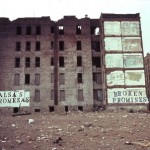
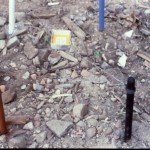
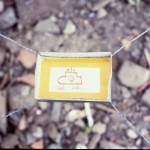
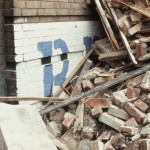
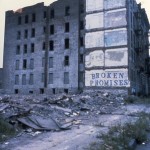
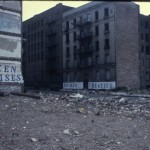
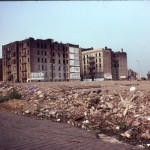
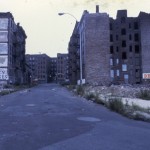
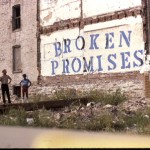
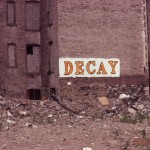

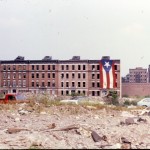
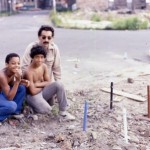
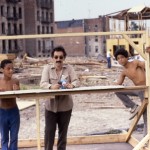


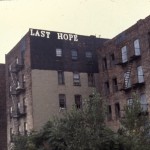
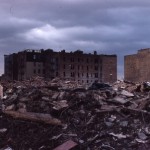
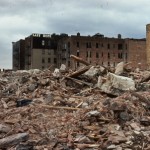
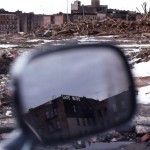
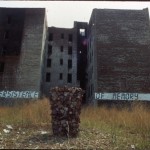
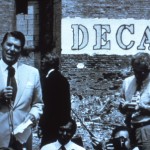
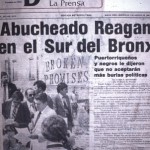
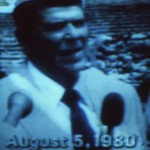
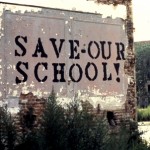
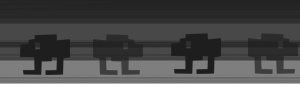
June 7th, 2010 at 2:12 pm
[...] eine Sammlung von John Fekners frühen Schriftschablonen Arbeiten hier [...]